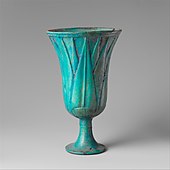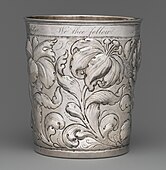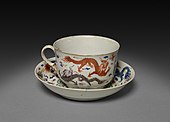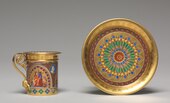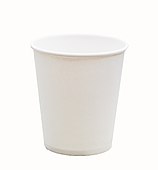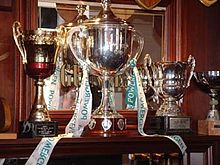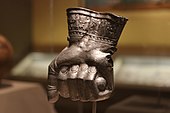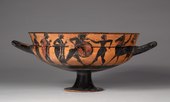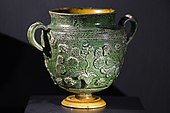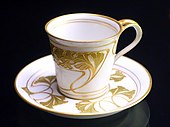
Bronze is an alloy consisting primarily of copper, commonly with about 12–12.5% tin and often with the addition of other metals and sometimes non-metals, such as phosphorus, or metalloids such as arsenic or silicon. These additions produce a range of alloys that may be harder than copper alone, or have other useful properties, such as strength, ductility, or machinability.

A drink or beverage is a liquid intended for human consumption. In addition to their basic function of satisfying thirst, drinks play important roles in human culture. Common types of drinks include plain drinking water, milk, juice, smoothies and soft drinks. Traditionally warm beverages include coffee, tea, and hot chocolate. Caffeinated drinks that contain the stimulant caffeine have a long history.
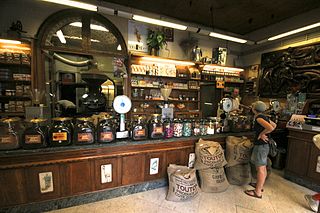
Italians are well known for their special attention to the preparation, the selection of the blends, and the use of accessories when creating many types of coffees. Many of the types of coffee preparation known today also have their roots here. The main coffee port in Italy is Trieste where there is also a lot of coffee processing industry. Italian coffee consumption, often espresso, is highest in the city of Trieste, with an average of 1500 cups of coffee per person per year. That is about twice as much as is usually drunk in Italy.

A teapot is a vessel used for steeping tea leaves or a herbal mix in boiling or near-boiling water, and for serving the resulting infusion which is called tea. It is one of the core components of teaware. Dry tea is available either in tea bags or as loose tea, in which case a tea infuser or tea strainer may be of some assistance, either to hold the leaves as they steep or to catch the leaves inside the teapot when the tea is poured. Teapots usually have an opening with a lid at their top, where the dry tea and hot water are added, a handle for holding by hand and a spout through which the tea is served. Some teapots have a strainer built-in on the inner edge of the spout. A small air hole in the lid is often created to stop the spout from dripping and splashing when tea is poured. In modern times, a thermally insulating cover called a tea cosy may be used to enhance the steeping process or to prevent the contents of the teapot from cooling too rapidly.

Ancient art refers to the many types of art produced by the advanced cultures of ancient societies with different forms of writing, such as those of ancient China, India, Mesopotamia, Persia, Palestine, Egypt, Greece, and Rome. The art of pre-literate societies is normally referred to as prehistoric art and is not covered here. Although some pre-Columbian cultures developed writing during the centuries before the arrival of Europeans, on grounds of dating these are covered at pre-Columbian art and articles such as Maya art, Aztec art, and Olmec art.

A mug is a type of cup typically used for drinking hot drinks, such as coffee, hot chocolate, or tea. Mugs usually have handles and hold a larger amount of fluid than other types of cups. Typically, a mug holds approximately 240–350 ml of liquid. A mug is a less formal style of drink container and is not usually used in formal place settings, where a teacup or coffee cup is preferred. Shaving mugs are used to assist in wet shaving.

A vase is an open container. It can be made from a number of materials, such as ceramics, glass, non-rusting metals, such as aluminium, brass, bronze, or stainless steel. Even wood has been used to make vases, either by using tree species that naturally resist rot, such as teak, or by applying a protective coating to conventional wood or plastic. Vases are often decorated, and they are often used to hold cut flowers. Vases come in different sizes to support whatever flower is being held or kept in place.

A demitasse, demi-tasse, or espresso cup is a small cup used to serve espresso. It may also refer to the coffee served in such a cup, though that usage had disappeared in France by the early 20th century.
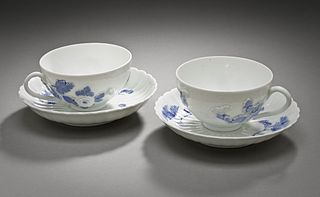
A teacup is a cup for drinking tea. It generally has a small handle that may be grasped with the thumb and one or two fingers. It is typically made of a ceramic material and is often part of a set which is composed of a cup and a matching saucer or a trio that includes a small cake or sandwich plate. These may be part of a tea set combined with a teapot, cream jug, covered sugar bowl, and slop bowl. Teacups are often wider and shorter than coffee cups. Cups for morning tea are conventionally larger than cups for afternoon tea.
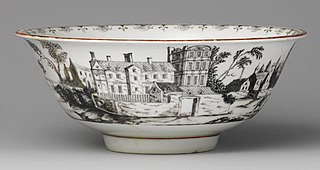
In Europe, a slop bowl, slop basin or waste bowl is one of the components of a traditional tea set. It was used to empty the cold tea and dregs in tea cups before refilling with hot tea, as there were often tea leaves in the bottom of the cups.

Tasseography is a divination or fortune-telling method that interprets patterns in tea leaves, coffee grounds, or wine sediments.

Tableware items are the dishware and utensils used for setting a table, serving food, and dining. The term includes cutlery, glassware, serving dishes, serving utensils, and other items used for practical as well as decorative purposes. The quality, nature, variety and number of objects varies according to culture, religion, number of diners, cuisine and occasion. For example, Middle Eastern, Indian or Polynesian food culture and cuisine sometimes limits tableware to serving dishes, using bread or leaves as individual plates, and not infrequently without use of cutlery. Special occasions are usually reflected in higher quality tableware.

A bowl is a typically round dish or container generally used for preparing, serving, storing, or consuming food. The interior of a bowl is characteristically shaped like a spherical cap, with the edges and the bottom forming a seamless curve. This makes bowls especially suited for holding liquids and loose food, as the contents of the bowl are naturally concentrated in its center by the force of gravity. The exterior of a bowl is most often round, but can be of any shape, including rectangular.

A coffee cup is a container, a cup, for serving coffee and coffee-based drinks. There are three major types: conventional cups used with saucers, mugs used without saucers, and disposable cups. Cups and mugs generally have a handle. Disposable paper cups used for take-out sometimes have fold-out handles, but are more often used with an insulating coffee cup sleeve.

A tea set or tea service is a collection of matching teaware and related utensils used in the preparation and serving of tea. The traditional components of a tea set may vary between societies and cultures.
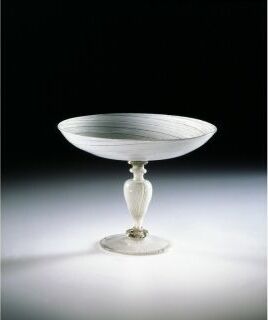
A tazza is a wide but shallow saucer-like dish either mounted on a stem and foot or on a foot alone. The word has been generally adopted by archaeologists and connoisseurs for this type of vessel, used either for drinking, serving small items of food, or just for display. Tazze are most commonly made in metal, glass, or ceramics, but may be made in other materials.

Beer glassware comprise vessels made of glass, designed or commonly used for serving and drinking beer. Styles of glassware vary in accord with national or regional traditions; legal or customary requirements regarding serving measures and fill lines; such practicalities as breakage avoidance in washing, stacking or storage; commercial promotion by breweries; artistic or cultural expression in folk art or as novelty items or usage in drinking games; or to complement, to enhance, or to otherwise affect a particular type of beer's temperature, appearance and aroma, as in the case of its head. Drinking vessels intended for beer are made from a variety of materials other than glass, including pottery, pewter, and wood.

The china service of the Lincoln administration generally refers to a set of purple-banded china (porcelain) dishes used for serving and eating food at the White House, home of the president of the United States for state dinners. Also known as the Lincoln solferino china service, it was purchased in April 1861 by First Lady Mary Todd Lincoln. The porcelain was manufactured by Haviland & Co. in France, and some of the decoration of the china was made overseas. Additional decoration was made by the American firm of E. V. Haughwout & Co., which sold the china to Mrs. Lincoln.

The Swan Service is a large service of baroque Meissen porcelain which was made for the First Minister of the Electorate of Saxony and favourite of king Augustus III of Poland, Heinrich von Brühl. Augustus had made Brühl the Supervisor of the Meissen works in 1733, then in August 1739 its director. The Swan Service has been called "the most famous high baroque production in Meissen porcelain", "a triumph of modelling and firing", and "the most fabulous tableware conceived in porcelain". After earlier work with prototypes, the Meissen designers and modellers Johann Joachim Kändler, Johann Friedrich Eberlein and Johann Gottlieb Ehder created the service, which consists of over 2,200 individual pieces, between 1737 and 1741 or 1742.

